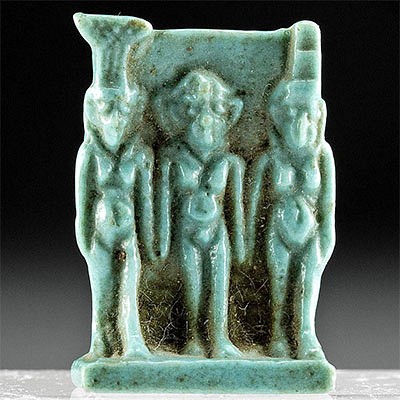Valdivian Spondylus Shell Coatimundi Amulet
Lot 181
About Seller
Artemis Gallery
686 S Taylor Ave, Ste 106
Louisville, CO 80027
United States
Selling antiquities, ancient and ethnographic art online since 1993, Artemis Gallery specializes in Classical Antiquities (Egyptian, Greek, Roman, Near Eastern), Asian, Pre-Columbian, African / Tribal / Oceanographic art. Our extensive inventory includes pottery, stone, metal, wood, glass and textil...Read more
Estimate:
$1,300 - $1,950
Absentee vs Live bid
Two ways to bid:
- Leave a max absentee bid and the platform will bid on your behalf up to your maximum bid during the live auction.
- Bid live during the auction and your bids will be submitted real-time to the auctioneer.
Bid Increments
| Price | Bid Increment |
|---|---|
| $0 | $25 |
| $300 | $50 |
| $1,000 | $100 |
| $2,000 | $250 |
| $5,000 | $500 |
| $10,000 | $1,000 |
| $20,000 | $2,500 |
| $50,000 | $5,000 |
| $100,000 | $10,000 |
| $200,000 | $20,000 |
About Auction
By Artemis Gallery
Aug 5, 2021
Set Reminder
2021-08-05 10:00:00
2021-08-05 10:00:00
America/New_York
Bidsquare
Bidsquare : VARIETY SALE | Antiquities & Ethnographic Art
https://www.bidsquare.com/auctions/artemis-gallery/variety-sale-antiquities-ethnographic-art-7292
Featuring classical antiquities, ancient and ethnographic art from cultures encompassing the globe. Egyptian, Greek, Roman, Etruscan, Near Eastern, Asian, Pre-Columbian, Native American, African / Tribal, Oceanic, Spanish Colonial, Russian, Fossils, Fine Art, more! Artemis Gallery info@artemisgallery.com
Featuring classical antiquities, ancient and ethnographic art from cultures encompassing the globe. Egyptian, Greek, Roman, Etruscan, Near Eastern, Asian, Pre-Columbian, Native American, African / Tribal, Oceanic, Spanish Colonial, Russian, Fossils, Fine Art, more! Artemis Gallery info@artemisgallery.com
- Lot Description
Pre-Columbian, Ecuador, Valdivia culture, ca. 3500 to 1500 BCE. A gorgeous hand-carved Spondylus shell amulet in the shape of a long zoomorphic creature with two integral hand-drilled piercings through the head and tail. This shell is mostly a creamy white surface with a maroon area on the tail, showcasing the natural coloration of the Spondylus shell. The animal this amulet depicts is a coatimundi, a raccoon like creature that was tamed by ancient Valdivian people. The coati is depicted with his tail hanging down, a curving body, and his front paws clasp his elongated snout. Two drilled cavities create eyes, and two perked ears completes the creature. Coatis were also symbols of life and dawn; as nocturnal animals, coatis are most active at dawn. Spondylus amulets had spiritual significance and power in many Andean cultures, and this striking effigy is imbued with power from the material used and creature it depicts. Size: 5.5" L x 1.375" W (14 cm x 3.5 cm); 6.75" H (17.1 cm) on included custom stand.
Provenance: private New York, USA collection, purchased April 2006; ex-Santana Gallery, San Juan Bautista, California, USA
All items legal to buy/sell under U.S. Statute covering cultural patrimony Code 2600, CHAPTER 14, and are guaranteed to be as described or your money back.
A Certificate of Authenticity will accompany all winning bids.
Replace: PLEASE NOTE: Due to recent increases of shipments being seized by Australian & German customs (even for items with pre-UNESCO provenance), we will no longer ship Replace: most antiquities and ancient Chinese art to Australia & Germany. For categories of items that are acceptable to ship to Australia or Germany, please contact us directly or work with your local customs brokerage Replace: firm.
Display stands not described as included/custom in the item description are for photography purposes only and will not be included with the item upon shipping.
#165134Natural ossification and pitting of shell surface. Chips and nicks to high pointed areas, light mineral and earthen deposits on surface and recessed areas.Condition
- Shipping Info
-
All shipping is handled in-house for your convenience. Your invoice from Artemis Gallery will include shipping calculation instructions. If in doubt, please inquire BEFORE bidding for estimated shipping costs for individual items.
-
- Buyer's Premium



 EUR
EUR CAD
CAD AUD
AUD GBP
GBP MXN
MXN HKD
HKD CNY
CNY MYR
MYR SEK
SEK SGD
SGD CHF
CHF THB
THB













